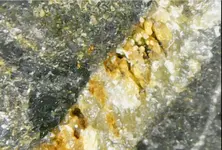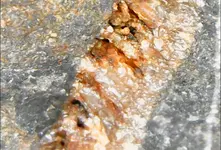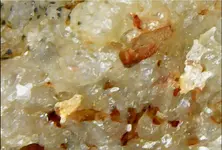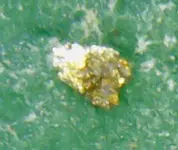tonofsteel
Jr. Member
- Joined
- Dec 21, 2017
- Messages
- 23
- Reaction score
- 18
- Golden Thread
- 0
- Location
- Gap of Canada
- Primary Interest:
- Prospecting
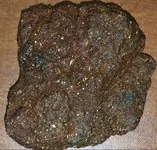
I found this and crushed/panned it. The flakes floated around like mica or pyrite. From what I know I would have to say it is mica flecks in the sample.
I have heard of the different treatments for refractory ore like:
- Aqua Regia + Stannous Cloride
- Milling/flotation and leaching with Cynaide
- Crush then Roast ore in pan with salt and throw ore into cold water then mill after
Is it possible to test the gold content by using a torch to heat the sample and then crush and pan? Or does it need to be roasted in a pan for hours and then thrown into water?
If the torch burns off sulfur then shouldn't there be a noticeable change to the flakes in the sample?
Reading about pyrites it sounds like they should weather out over time. The sample above was found in a wet area and I left it in water for quite some time since I forgot about it. The rusty stuff looks to me to be weathered but the shiny stuff does not look weathered at all. If there was copper wouldn't it be turning green or rainbow colors. If iron the shiny flakes should be rusting.
Are there any tricks to quickly get a bit of a better idea/confidence that it is worth going all lab on this? I don't want to contaminate any cooking heat sources with any nasties that might come off of a sample and don't want to go and buy one if this line of inquiry is a total waste of time.
If there is gold in pyrite would it behave any differently in the pan? I would think it would still easily wash around but maybe a tiny bit lazier than pure pyrite? Also pyrite with gold in it would shatter/flake like pure pyrite since gold is within it and not an alloy?
I come across heavy pyrite in samples but have dismissed it so far except for one sample sent in for assay. Just wondering if there is a quick way to get even a bit more confidence to pack out a sample rather than pass it over.
Upvote
0



